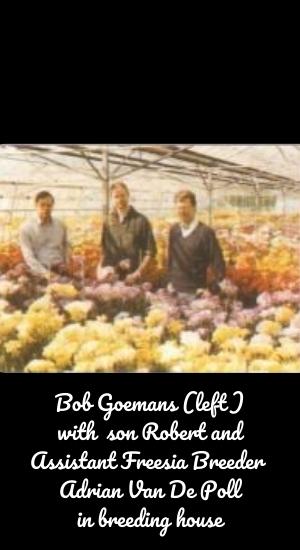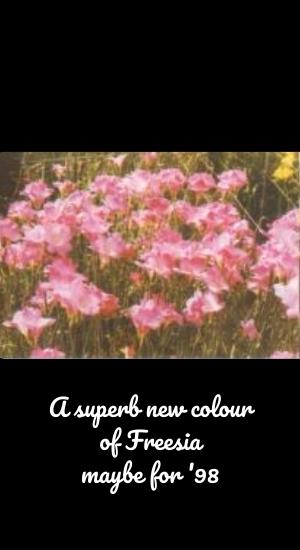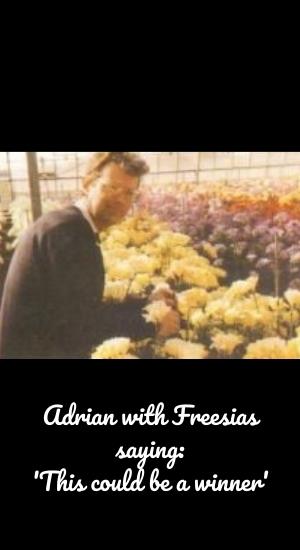If you missed part one you might want to read that first.
Our story continues in 1964 when the demand for the new super hybrids increases.
Parigo buys land in Sussex to keep up with all the orders and build new glass houses.
The extra light pays off. Two are widespan houses producing over 100,000 blooms each year while the smaller houses are used for propagating and breeding.
By 1978, John and his sons Bob and Frank start focussing on the three most successful crops - alstroemeria, freesia and gladioli.
At this time they see a need to simplify as they were running seven nurseries in total between Sussex and Lincolnshire. They decide to sell four of the nurseries and upgrade the remaining three. Bob manages Spalding and Frank is in charge of Chichester.
Come 1988, Parigo’s production areas total 9 acres - all under glass!
About two thirds of their cut flower production is sold through wholesale market channels countrywide. The rest goes to secondary wholesalers, local florists and a few supermarket customers.
The breeding plants of all three crops are an important part of the business and are sold worldwide.
Believing quality is paramount, Bob Goemans says:
“We really know how to grow the crops we have specialised in and as breeders and growers, we follow all the way through with a top quality product”.
In 1998, the hybrid alstroemeria’s future is looking more and more promising as the worldwide demand for Parigo varieties continues to grow.
This leads to the building of high-tech labs for micropropagation.
By this time South America, Africa, Japan, Holland, France and Germany are all growing the hybrids. However, Parigo has about 25% of the market share supplying alstroemeria plants to cut flower growers in the UK.
The range is extended to 24 with three new varieties – ‘Oriana’, ‘Vanessa’ and ‘Tristar’.
Lead varieties are the deep ruby ‘Bellini’, bright magenta ‘Europa’, ‘Yellow Crown’ and ‘Friendship’. ‘Athena’ claims fourth position out of 20 in Dutch productivity trials while ‘Europa’ and ‘Bellini’ are planted for assessment in the 1998 trials. Parigo also begins working with leading supermarket chains to supply cut flowers.
In 2004 new garden variety alstroemeria are being bred and Parigo starts exhibiting these at flower shows around the country.
The plants get a wonderful reception and continue to be popular garden flowering plants.
In 2019, after nearly 81 years running Parigo as a family business, it came time for Frank and Bob to retire.
However, they didn't want to just dissolve the company or let it go dormant as they still supplied a number of UK cut flower growers and retail plant sellers with Parigo hybrids.
Instead, the brothers wanted their father’s legacy to continue and for Britain to become known again for growing and breeding alstroemeria.
This led to Frank handing his treasured family business over to Alec - handpicking him because of his success in growing peonies and his brand “Primrose Hall Peonies”.
Alec is committed to producing the highest quality alstroemeria plants. He’s passionate about showing the world what fantastic, versatile plants they are and the wonderful assortment available for both the garden and the vase.







